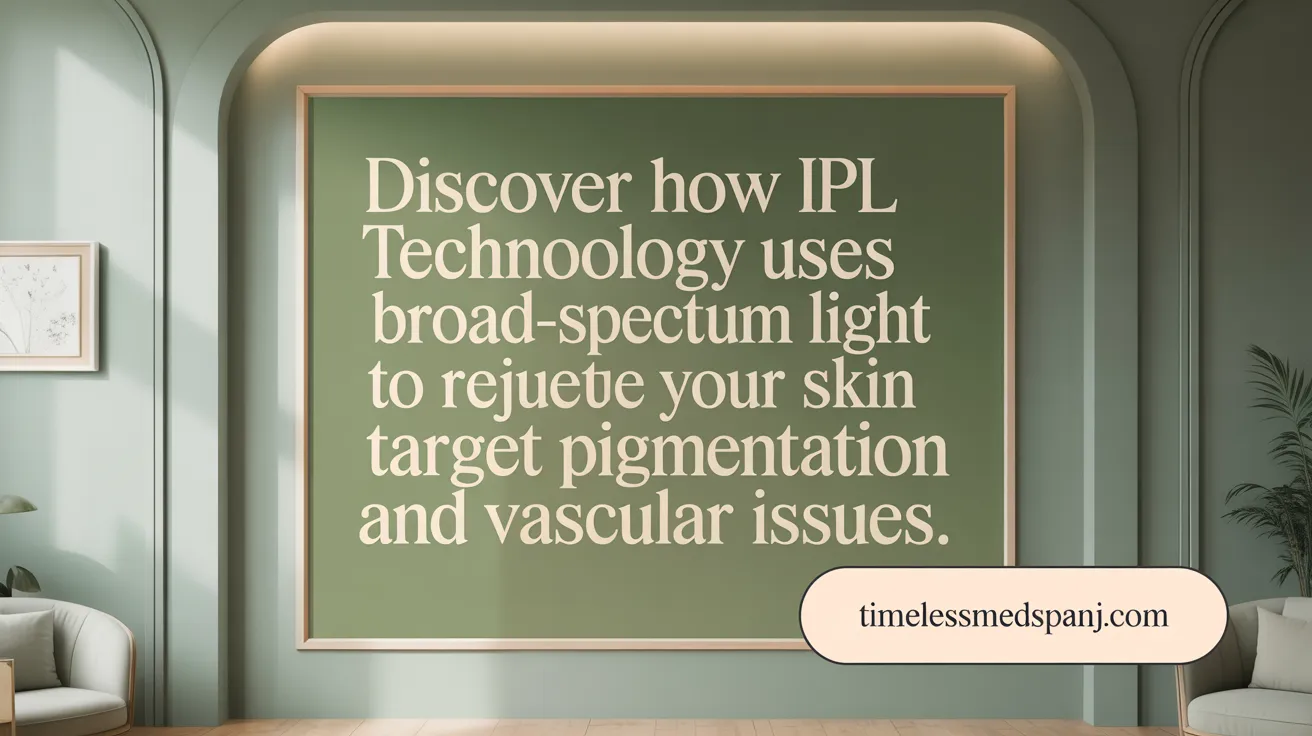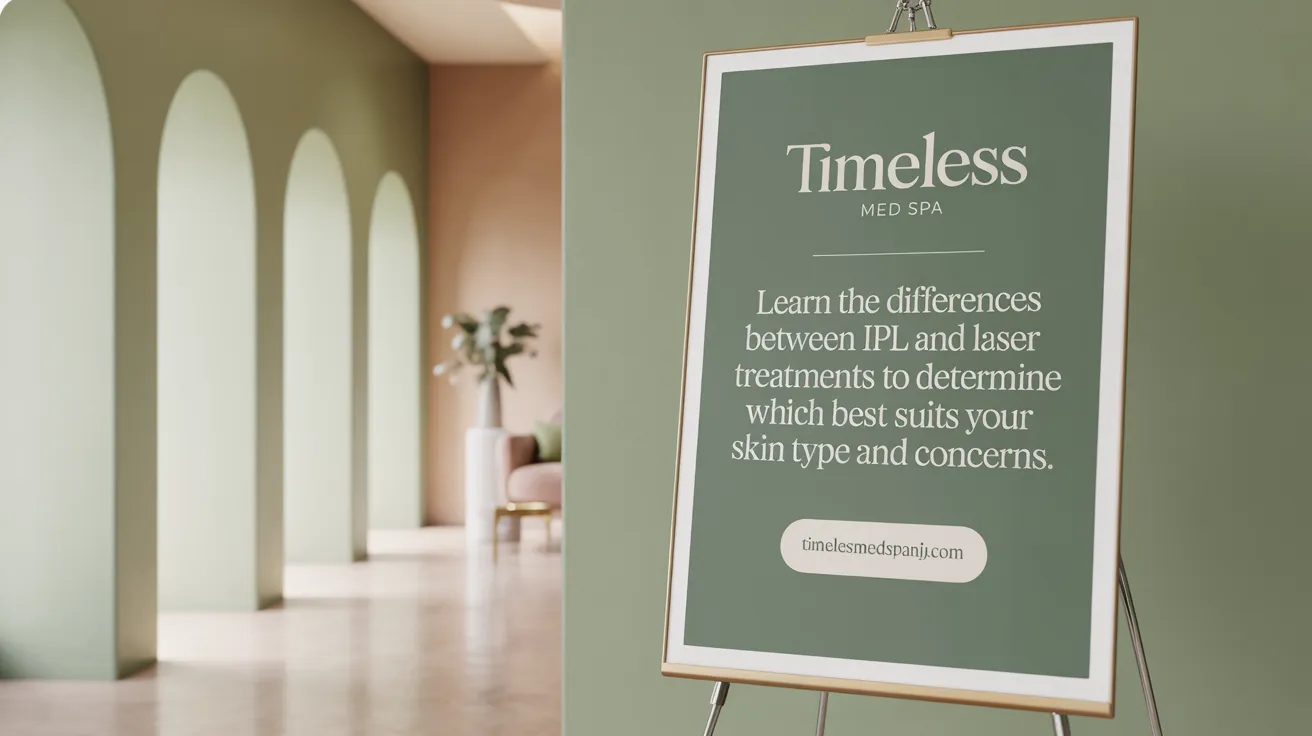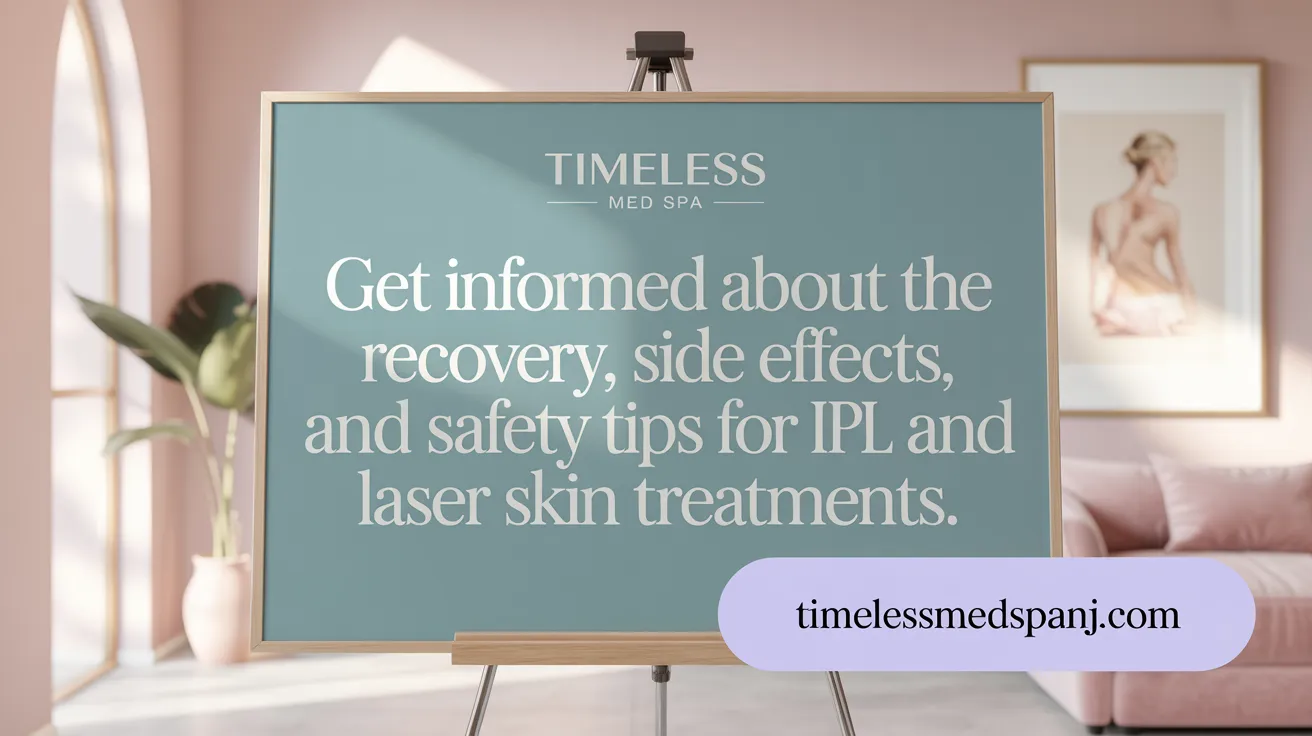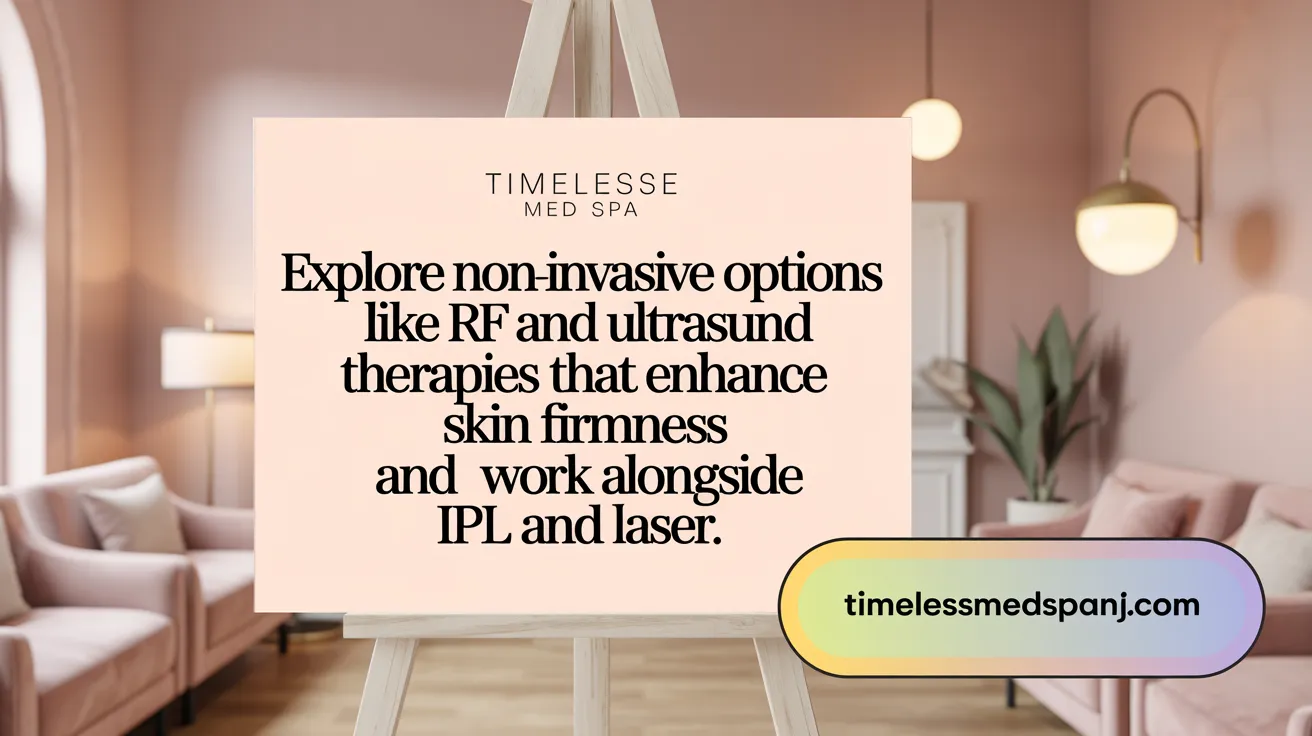Exploring Non-Invasive Skin Treatments: An Overview
Understanding IPL and Laser Skin Treatments
IPL (Intense Pulsed Light) therapy uses broad-spectrum light with multiple wavelengths to target a variety of skin issues such as sun damage, hyperpigmentation, rosacea, broken blood vessels, acne scars, and age spots. It is a non-invasive procedure noted for its affordability and relatively quick treatment sessions.
Laser skin treatments, on the other hand, utilize focused, single-wavelength light. There are several types of lasers, including ablative and non-ablative, which target specific layers of the skin more precisely. For example, CO2 laser treatment is used for deeper skin resurfacing, tightening sagging skin, and reducing wrinkles, while the Aerolase laser combines ablative and non-ablative properties to treat both surface and deep skin issues.
Skin Concerns Addressed by Both Treatments
Both IPL and laser treatments effectively address concerns related to:
- Sun damage and age spots
- Hyperpigmentation and discoloration
- Rosacea and broken blood vessels
- Acne scars and fine lines
- Unwanted hair and vascular lesions
Additionally, laser treatments can promote collagen production more deeply, which helps with skin tightening and smooths more prominent scars.
Choosing the Right Treatment for Your Skin
Selecting between IPL and laser treatments depends on individual factors such as skin type, specific skin concerns, desired outcomes, budget, and tolerance for downtime.
IPL is generally more affordable and requires fewer treatment sessions, making it a great option for those with lighter skin tones and mild to moderate pigmentation issues.
Laser therapy offers longer-lasting and often more dramatic results, especially for deeper skin rejuvenation and scarring, but typically demands a higher investment and may involve some recovery time.
Ultimately, consulting with a professional provider is essential to develop a personalized plan that aligns with your skin’s needs and your aesthetic goals. Clinics like The Park MedSpa or Timeless Med Spa offer experienced staff who tailor treatment plans for natural, effective results.
What is IPL and How Does It Work?

IPL technology and mechanism
Intense Pulsed Light therapy is a popular, non-invasive skin treatment using broad-spectrum light made up of multiple wavelengths. Unlike lasers which focus a single wavelength, IPL emits quick flashes of light targeting pigmented areas and vascular lesions in the skin. This light energy is absorbed by chromophores such as melanin or hemoglobin, breaking up discoloration and stimulating collagen production underneath for a smoother, more even skin tone.
Types of skin issues IPL addresses
IPL PhotoFacial is effective at treating various skin conditions including sun damage, age spots, freckles, hyperpigmentation, rosacea, redness, acne scars, broken blood vessels, melasma, spider veins, and ingrown hairs. Because it is gentler than laser skin treatments, IPL is often chosen for lighter skin tones and less severe skin concerns. It can also help reduce inflammation and acne-causing bacteria, making it a versatile choice for many clients.
Typical treatment process and session costs
A typical IPL treatment session usually lasts between 20 to 30 minutes and is performed by trained professionals in outpatient settings. Most clients require 3 to 5 sessions spaced four to six weeks apart for optimal results. IPL cost and effectiveness reports IPL treatments are generally more affordable compared to laser therapy, with costs ranging from $150 to $300 per session at reputable med spas.
This combination of broad-spectrum light technology, wide application for skin concerns, and a shorter, cost-effective treatment course makes IPL an attractive solution for many seeking facial rejuvenation and pigmentation correction.
Understanding Laser Skin Treatments and Their Advantages
Types of lasers including ablative and non-ablative
Laser skin treatments include ablative and non-ablative lasers. Ablative lasers, such as the CO2 laser treatment for skin resurfacing, remove the top skin layer to provide dramatic resurfacing results by vaporizing damaged skin and stimulating collagen growth. Non-ablative lasers, like the Aerolase laser used at The Park Medspa in Highland Park NJ , heat underlying tissue without removing skin, offering effective treatment with less downtime.
How lasers target skin differently from IPL
Unlike IPL PhotoFacial, which uses broad-spectrum light with multiple wavelengths, laser treatments utilize focused, single-wavelength light targeting specific skin issues. This focus allows lasers to penetrate deeper skin layers and address complex concerns such as deep wrinkles, scars, and pronounced hyperpigmentation more effectively.
Effectiveness for deep skin issues and collagen stimulation
Laser therapies uniquely stimulate collagen production beneath the skin surface, promoting skin tightening and rejuvenation. Ablative lasers like fractionated CO2 laser therapy can improve deep wrinkles, acne scars, and skin laxity in a single session. Non-ablative lasers also promote collagen and enhance fine lines and redness with minimal downtime.
Cost and downtime considerations
Laser treatments are typically more expensive than IPL, with sessions ranging from $220 to $530. Healing time varies; ablative lasers may require 7-10 days off for recovery, while non-ablative lasers offer shorter downtime. IPL is generally more affordable ($150-$300) but often requires more sessions for comparable results. See more about IPL cost and effectiveness and Laser treatment cost and downtime.
How does Timeless Med Spa personalize treatments for clients?
At Timeless Med Spa Berlin, NJ, our expert team personalizes treatments by assessing each client's skin type, aging concerns, and goals. Using advanced technologies and a wide service menu, we tailor procedures such as laser therapies and injectables to achieve natural, effective outcomes. This individualized approach ensures treatments meet unique needs while prioritizing safety and longevity of results.
Comparing IPL and Laser Treatments: Effectiveness and Suitability

Skin conditions best treated by IPL vs. laser
IPL (Intense Pulsed Light) therapy effectively addresses surface skin issues such as sun damage, freckles, age spots, rosacea, hyperpigmentation, and broken blood vessels. It also helps reduce redness and acne scars. Laser treatments, especially those using devices like the Aerolase laser or CO2 lasers, are suited for more significant skin concerns including deep wrinkles, acne scars, fine lines, skin laxity treatment with RF, and deeper pigmentation irregularities. Laser therapy can penetrate deeper layers of skin to stimulate collagen growth and achieve skin resurfacing effects that IPL cannot match.
How skin tone affects treatment choice
IPL tends to be less effective and carries a higher risk of side effects for darker skin tones due to its broad-spectrum light, which can cause pigmentation changes. In contrast, modern laser treatments, particularly those using specific wavelengths such as the Aerolase laser, are safer and more effective across all skin types, including darker tones.
Number of sessions and longevity of results
IPL usually requires multiple sessions—generally 3 to 5—spaced several weeks apart, with results lasting about 6 to 12 months. Laser treatments often need fewer sessions, sometimes just one, due to their deeper skin impact. The results from laser resurfacing are typically longer-lasting, supported by ongoing collagen production, and can persist for several years.
Safety profiles and side effects
IPL is a gentler treatment with minor side effects such as mild pain, redness, bruising, and temporary sunburn-like skin irritation. It has a lower risk of scarring. Laser treatments, especially ablative types like CO2 lasers, have more downtime with redness, crusting, and a recovery period of about a week or longer. While more invasive, laser procedures yield more dramatic results but require careful aftercare and professional oversight to minimize risks.
Choosing the appropriate treatment depends on individual skin conditions, tone, desired outcomes, treatment tolerance, and budget. Consulting with experienced providers at medical spas like Timeless Med Spa Berlin, NJ or The Park Medspa Highland Park NJ ensures a personalized approach to maximize safety and achieve natural-looking results.
Deep Dive into CO2 Laser Skin Resurfacing

How CO2 Laser Works and Its Uses
CO2 laser skin resurfacing targets the skin with a carbon dioxide laser beam that creates tiny micro-perforations in the upper layers. This process vaporizes damaged skin cells and stimulates collagen production beneath the surface. The treatment effectively addresses deep wrinkles, acne scars, dark spots, uneven pigmentation, sun damage, and skin texture irregularities. Additionally, CO2 lasers can tighten sagging skin and smooth deep wrinkles, making it ideal for comprehensive skin rejuvenation.
Fractionated Laser Therapy Benefits
Fractionated CO2 laser therapy divides the laser energy into thousands of microscopic treatment zones, leaving surrounding skin intact. This technique significantly reduces the risk of side effects such as scarring and hypopigmentation by limiting thermal damage. The controlled injury promotes faster healing and enhanced collagen remodeling, leading to smoother, firmer, and brighter skin with less downtime compared to traditional CO2 laser treatments.
Recovery Time and Side Effects
A typical CO2 laser session lasts between 60 and 90 minutes and requires a recovery period involving redness, crusting, and peeling. Patients are usually advised to take about a week off from work to allow the skin to heal properly. Side effects can include swelling, sensitivity, and temporary pinkness lasting several weeks to months. Proper aftercare, including gentle cleansing and strict sun protection, is crucial to minimize complications and optimize outcomes.
Why It Is Considered a Gold Standard for Skin Resurfacing
CO2 laser resurfacing remains a gold standard treatment because it delivers dramatic, long-lasting results by addressing both surface and deeper skin issues in a single session. Its ability to stimulate robust collagen growth leads to significant skin tightening, wrinkle reduction, and scar improvement. Though more invasive and costly than other laser options, advanced fractional CO2 technology enhances safety and speeds recovery, making it a top choice for patients seeking natural, transformative skin rejuvenation under professional care.
Side Effects and Downtime: What to Expect from IPL and Laser

Common side effects of IPL and how they are managed
IPL PhotoFacial treatment is known for being a gentler, less invasive treatment compared to traditional lasers. Common side effects include mild pain similar to a sunburn, skin redness, bruising, and occasional blistering. These symptoms typically resolve within a few days. Temporary skin irritation and minor bruising can occur due to blood vessel damage but usually fade without lasting effects. Proper after-care, such as avoiding sun exposure and using soothing skincare products, helps manage these effects effectively.
Laser treatment side effects including recovery challenges
Laser skin resurfacing, especially ablative lasers like CO2 laser treatment for skin resurfacing, tend to induce more significant side effects due to their deeper skin penetration. These include redness, swelling, crusting, and peeling lasting up to two weeks or more. Recovery involves careful wound care to avoid infections and scarring. Some patients may experience prolonged pinkness or sensitivity lasting months. Non-ablative lasers and fractional technologies offer shorter downtime but still require cautious after-care. Recovery challenges emphasize the necessity for patient compliance with post-treatment instructions.
Comparative downtime and precautions
IPL sessions generally have minimal to no downtime, allowing for a quick return to normal activities. In contrast, laser treatments can require a week or more off work, particularly with ablative procedures. Sun avoidance and sunscreen use are crucial after both treatments to protect healing skin and preserve results. Due to the varying intensity and side effect profiles, treatments should be chosen based on individual skin type, condition severity, and lifestyle needs.
Importance of professional supervision during treatments
Both IPL PhotoFacial and laser skin treatment procedures must be performed by qualified professionals such as licensed aestheticians, nurses, or dermatologists to ensure safety and efficacy. Proper assessment before treatment helps prevent adverse reactions, especially in darker skin tones where IPL may be less suitable. Professional supervision guarantees appropriate device settings, pain management, and monitoring of side effects, reducing risks and optimizing outcomes.
The Role of Non-Surgical Skin Tightening and Complementary Treatments

What technologies are used in non-surgical skin tightening?
Non-surgical skin tightening employs several advanced energy-based technologies to stimulate collagen and elastin production. Key techniques include ultrasound, radiofrequency (RF), and combined IPL/RF treatments. Ultrasound therapies like Ultherapy® are FDA-cleared for treating areas such as the brow, chin, neck, and chest. RF treatments, available under brands like Thermage® and Exilis®, heat the deeper layers of skin to promote gradual firming and tightening. Some therapies, including Venus Versa® and VelaShape®, merge IPL with RF to address multiple skin concerns simultaneously. These skin laxity treatments with RF effectively improve skin firmness.
Who benefits from these treatments?
These treatments are particularly effective for patients experiencing mild to moderate skin laxity. By boosting collagen and elastin over time, skin tone and texture improve, offering a natural-looking rejuvenation without surgery. This is ideal for clients who seek subtle tightening effects and want to postpone more invasive procedures.
How do these treatments complement IPL and laser therapy?
Non-surgical skin tightening complements IPL and laser therapies well. While IPL and laser treatments focus on pigmentation, sun damage, scars, and fine lines by targeting the skin's surface and deeper layers with light energy, tightening treatments work underneath the skin. The combination enhances overall skin quality, addressing both texture and firmness. Leveraging both approaches can deliver a more comprehensive facial rejuvenation with minimized downtime.
Who provides these treatments?
Qualified providers for non-invasive skin tightening include licensed aestheticians and nurses, often working under physician supervision. More invasive RF procedures should be performed by experienced surgeons to ensure safety and effectiveness. Clinics in places like Berlin, New Jersey, such as Timeless Med Spa Berlin, NJ, offer these options with a commitment to personalized care and natural-looking results.
How Timeless Med Spa Integrates Advanced Technologies for Natural Enhancement
Overview of Timeless Med Spa's Approach to Natural, Safe Aesthetic Enhancement
Timeless Med Spa Berlin, NJ stands out by prioritizing natural beauty and safety in every treatment. The spa is led by highly experienced nurses who emphasize restoring skin tightness and collagen before considering injectable fillers. This ensures a refreshed appearance that feels and looks authentic rather than overdone. Their holistic philosophy supports clients throughout their journey to graceful aging, focusing on subtle, yet effective aesthetic improvements.
Use of Personalized Laser and IPL Treatments
The spa offers a range of advanced technologies, including personalized laser skin resurfacing and IPL (Intense Pulsed Light) therapies. These treatments address diverse skin concerns like pigmentation irregularities, fine lines, acne scars, and rosacea. By tailoring the choice and intensity of treatments to individual skin types and needs, Timeless Med Spa achieves results that harmonize with each client's complexion and goals. Utilizing both laser and IPL enables targeting both surface and deeper skin layers with minimal downtime, enhancing collagen production and skin rejuvenation naturally.
Staff Expertise and Commitment to Continuous Education
Staff members possess over a decade of clinical experience and are committed to ongoing professional development. This expertise ensures clients receive safe, cutting-edge treatments administered with skill and personalized care. Their knowledge of various technologies—from laser skin resurfacing to non-invasive body contouring methods—allows for customized plans blending multiple approaches effectively and responsibly.
Combination of Treatments for Optimal Results
Timeless Med Spa frequently combines treatments such as laser resurfacing, IPL, and injectable therapies to maximize outcomes. For example, collagen-stimulating therapies can precede or complement filler injections for a more natural volumizing effect. They also offer non-invasive body contouring methods and holistic services like Reiki massages to support overall well-being and a youthful appearance. This comprehensive care model promotes balanced enhancements that respect the individual’s natural features and lifestyle.
How does Timeless Med Spa promote graceful aging through its treatments?
Timeless Med Spa promotes graceful aging by delivering personalized plans that enhance natural features subtly. Their expertise and careful treatment sequencing maintain skin health and vitality. By combining advanced technologies with a tailored, holistic approach, the spa helps clients age with confidence, preserving elegance and freshness over time.
Making the Choice: IPL or Laser for Your Skin’s Needs?
Understanding IPL and Laser Treatments
IPL (Intense Pulsed Light) therapy uses broad-spectrum light to treat issues such as sun damage, redness, and pigmentation with generally more affordable sessions ranging between $150 and $300. Laser skin treatments, such as those using the Aerolase or CO2 lasers, employ focused wavelengths to penetrate deeper skin layers, offering longer-lasting, often more dramatic results but at a higher cost — typically between $220 and $530 per session.
Factors to Consider
When choosing between IPL and laser, several personal factors come into play:
- Skin Type and Condition: IPL is effective for lighter skin tones and surface pigmentation, while laser treatments can address deeper scarring, wrinkles, and skin laxity across all skin types, including darker tones.
- Budget and Sessions: IPL generally requires more sessions but is more budget-friendly. Laser treatments might need fewer sessions but involve a higher investment.
- Downtime: IPL has minimal downtime, making it convenient for busy lifestyles. Some laser procedures, especially CO2 resurfacing, require recovery periods up to one week.
The Importance of Professional Guidance
Consulting expert providers like those at Timeless Med Spa in Berlin, New Jersey, ensures personalized treatment plans emphasizing natural, safe outcomes. Their experienced nurses assess individual needs, help select the right procedure, and support patients through recovery for optimal, lasting results.
Choosing the right treatment ultimately depends on your skin goals, type, and lifestyle preferences—partnering with skilled professionals will provide the confidence to achieve rejuvenated, natural-looking skin.
